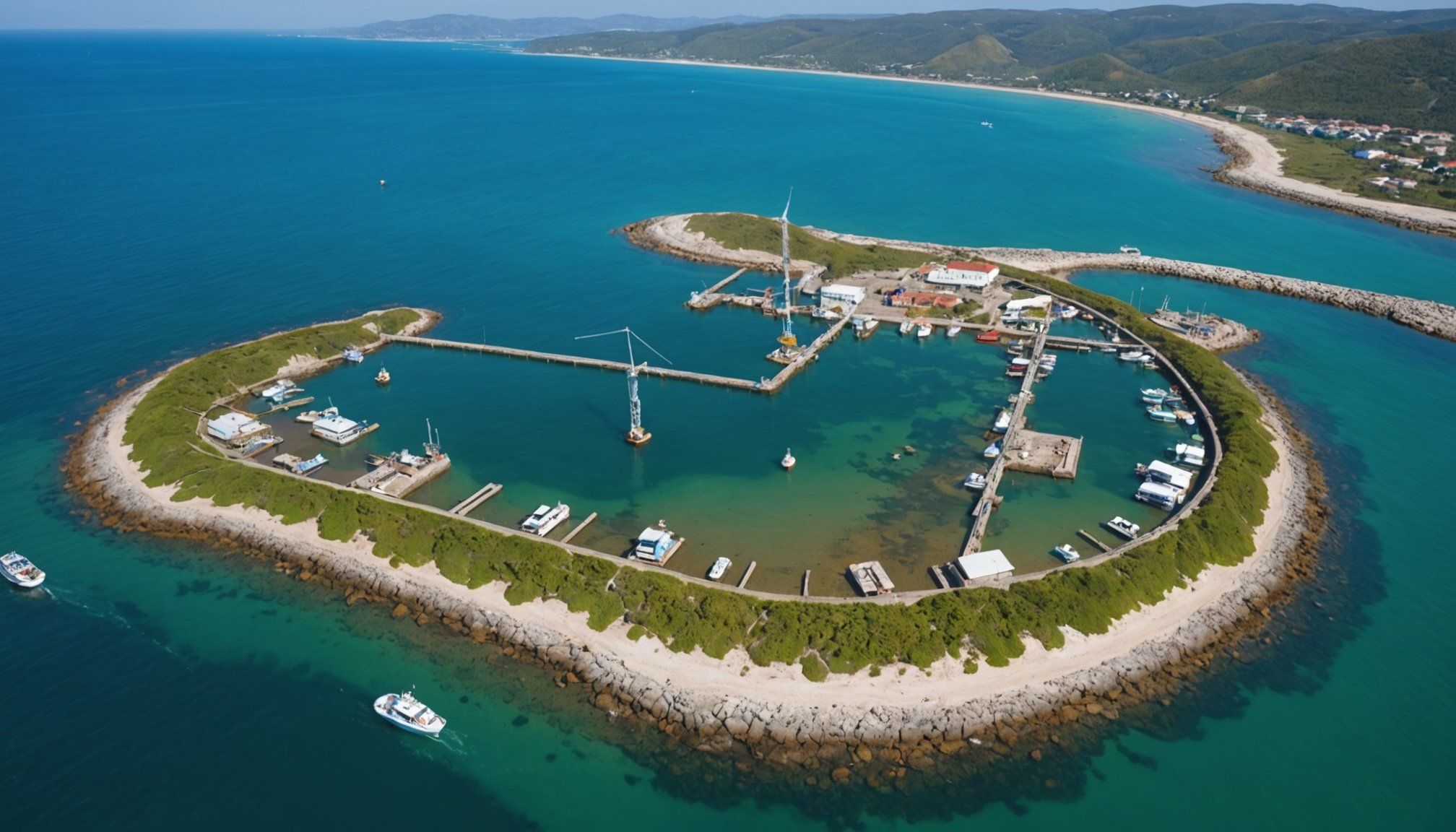Overview of Coastal Pollution Challenges
Coastal ecosystems are vital to biodiversity and human livelihoods, yet they remain highly susceptible to pollution. The importance of these ecosystems is evident in their role in supporting marine life, protecting shorelines, and providing resources for communities. However, the challenge of monitoring and assessing coastal pollution persists due to the complexity of these environments.
Environmental challenges are further complicated by the limitations of traditional surveillance methods. Conventional techniques often struggle with real-time detection, making it difficult to address pollution swiftly. This delay can exacerbate environmental damage, underscoring the need for more efficient solutions.
Also to read : Revolutionizing Complex Surgeries: The Precision Power of Augmented Reality
Surveillance technology has not kept pace with the escalating threats to coastal areas. Existing monitoring systems are frequently outdated, providing inadequate data for effective response measures. As pollutants can quickly disperse, the need for innovative detection methods is critical.
Emerging surveillance technologies promise to alleviate some of these issues by offering enhanced capabilities in tracking pollutants. By focusing on real-time data acquisition and processing, these advancements can significantly improve the management of coastal ecosystems. Embracing these technologies is essential to overcoming the challenges posed by traditional methods and ensuring healthier coastal environments.
This might interest you : Revolutionizing Urban Waste Management with IoT: Boosting City Efficiency
Introduction to AI in Environmental Monitoring
AI technology is transforming the realm of environmental monitoring, particularly in addressing pollution. This innovative approach utilises machine learning algorithms to process extensive datasets efficiently, providing accurate and timely insights. These capabilities enable the swift identification of pollution sources, a task that traditionally required labor-intensive methods.
Emerging innovative solutions in AI are tailored specifically for environmental applications. These include neural networks designed to predict changes in pollutant levels by analysing historical and real-time data. By employing such technologies, researchers can pre-emptively engage in conservation efforts before pollution levels become critical.
In coastal environments, AI’s role in pollution monitoring is especially valuable. These ecosystems are intricate and dynamic, with numerous variables to consider. AI-driven models can assimilate complex data from multiple sources, offering a comprehensive view of environmental health. As a result, conservation strategies can be more targeted and effective.
One prominent application of AI in environmental sciences is the development of autonomous drones equipped with sensors. These devices collect diverse data, enabling researchers to assess pollution spread rapidly and adjust their responses accordingly. In essence, AI not only enhances environmental monitoring but also revolutionises how data informs conservation policies.
Case Studies of AI in Coastal Pollution Surveillance
AI applications in coastal monitoring systems have significantly advanced, offering new hope for addressing coastal pollution. Case studies reveal several successful implementations where AI has transformed surveillance methods.
Successful Implementations
Some notable projects utilise AI applications for detecting pollutants with remarkable efficiency. For example, systems that integrate AI with sensors effectively pinpoint pollution hotspots. These projects often track key performance indicators, such as response time and detection accuracy. AI applications have consistently shown faster results compared to traditional methods, enabling quicker response and mitigation efforts. Case studies highlight lessons learned and best practices, stressing the importance of robust data collection and real-time processing capabilities.
Comparative Analysis
In comparing traditional methods to AI-enhanced surveillance, case studies often demonstrate AI’s superiority. AI approaches offer enhanced cost-effectiveness and efficiency, reducing the time and labour typically required. AI systems dramatically improve detection speed and accuracy, identifying pollutants that might be missed using conventional techniques. Overall, there is a consensus that AI applications elevate coastal monitoring to a new standard, offering unprecedented insights and a robust, proactive approach to environmental stewardship.
Benefits of AI-Driven Pollution Monitoring
The benefits of AI in pollution detection are far-reaching, significantly elevating environmental policy effectiveness. AI enhances real-time monitoring capabilities, allowing for early detection of pollutants, which is paramount in mitigating environmental damage. Rapid response times ensure that pollutants are managed before they cause irreversible harm to delicate ecosystems.
Improved data accuracy is another advantage, fostering better policymaking decisions. By delivering precise insights, AI empowers policy-makers to craft strategies that more effectively target pollution sources. This enables a proactive approach to managing coastal pollution challenges.
Moreover, AI-driven systems offer transparency, with the potential to boost public engagement and awareness. By providing accessible, reliable data on pollution levels, the technology invites community participation. This transparency fosters trust and encourages collective action to maintain healthy ecosystems.
Discussing AI’s utility in environmental monitoring uncovers AI applications like automated drones and sensor networks, which are integral in tackling coastal pollution. These technologies augment traditional monitoring systems, offering unique insights that revolutionise how pollutants are tracked and managed. As AI continues to evolve, its role in safeguarding coastal regions becomes ever more crucial, demonstrating an impressive synergy between technology and environmental stewardship.
Future Trends in Coastal Pollution Surveillance
As AI continues to evolve, the future of AI in coastal pollution surveillance promises significant technological advancements. One of the anticipated developments is the integration of AI with other cutting-edge technologies such as the Internet of Things (IoT) and satellite monitoring. This synergy has the potential to enhance data collection capabilities and enable more precise mapping of pollution trends across vast coastal areas.
AI-driven analytics will advance in their ability to predict environmental changes, offering policymakers deeper insights into coastal pollution trends. This predictive capacity allows for proactive measures to be implemented, reducing reliance on reactive strategies that often fail to adequately address emerging pollution issues. Moreover, AI’s growing role in automated systems will help streamline monitoring efforts, making them more efficient and less resource-intensive.
Adapting regulatory frameworks to incorporate these technological breakthroughs is essential. Policymakers must craft policies that are flexible and forward-thinking, ensuring they remain aligned with the rapid evolution of AI technologies. The focus should be on creating adaptive structures that support innovation while safeguarding environmental integrity. Embracing these trends will be crucial to effectively tackling the dynamic challenges of coastal pollution.
Challenges and Considerations
Introducing AI technologies in environmental monitoring poses myriad challenges, particularly within coastal ecosystems. These AI challenges arise partly from the technical complexities of deploying sophisticated systems in dynamic and often harsh coastal settings. The robustness of electronic components against corrosion, coupled with maintaining network connectivity in remote areas, are just a few of the technical hurdles faced.
Beyond technical issues, there are significant ethical considerations associated with employing AI solutions for coastal pollution monitoring. Concerns surrounding data privacy and the implications of surveillance introduce debate on the acceptable limits of environmental observation. Ensuring that data collection respects individual privacy is crucial, even when deployed for environmental benefits.
Additionally, the integration of AI into environmental frameworks necessitates interdisciplinary collaboration. Technological innovations should be informed by ecological, social, and ethical contexts, demanding teamwork among environmental scientists, AI specialists, policy-makers, and ethicists. By fostering such collaboration, the development of effective and responsible AI-driven monitoring systems becomes more attainable.
The necessity to address both technical and ethical challenges concurrently is critical in harnessing AI’s potential. As solutions evolve, these considerations should guide the responsible deployment of technology in safeguarding coastal environments.










